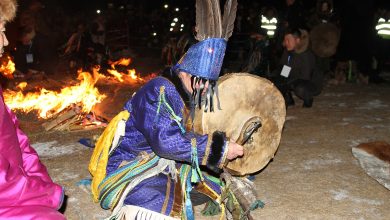Introduction:
Norse mythology, the rich tapestry of tales woven by the ancient Norse people, offers a captivating glimpse into a world populated by powerful deities, mythical creatures, and epic adventures. Among the central figures of this intricate mythological framework are Odin, the Allfather; Thor, the god of thunder; and Loki, the mischievous trickster. In this exploration, we delve into the fascinating realms of these deities and others, uncovering the stories that have captivated generations.

1. Odin, the Allfather:
At the pinnacle of the Norse pantheon stands Odin, often referred to as the Allfather. This enigmatic god is associated with wisdom, war, poetry, and magic. Odin’s insatiable quest for knowledge led him to sacrifice one of his eyes at the Well of Mímir, gaining immense wisdom in return. He is often depicted as a wise and far-seeing figure, wielding the mighty spear Gungnir and accompanied by two ravens, Huginn (Thought) and Muninn (Memory), who bring him information from all corners of the world.
Odin is also closely tied to the concept of fate and destiny. The Valkyries, warrior maidens serving Odin, select the bravest warriors from the battlefield to join him in Valhalla, the hall of the honored dead. Odin’s pursuit of wisdom, coupled with his role as a war god, makes him a complex and multifaceted figure in Norse mythology.
2. Thor, the God of Thunder:
Thor, the god of thunder and lightning, is one of the most well-known Norse deities. Renowned for his incredible strength and bravery, Thor is often depicted wielding the mighty hammer Mjölnir, a weapon that can crush mountains and control lightning. Thor is the defender of both gods and humanity, battling fierce giants and other cosmic threats.
Apart from his formidable prowess in battle, Thor is characterized by his red beard and his iron gloves, essential for handling Mjölnir. Despite his immense strength, Thor is not without vulnerability. His greatest foe is the world serpent Jormungandr, destined to bring about his demise during the apocalyptic event known as Ragnarok.
3. Loki, the Trickster:
Loki, the cunning and unpredictable trickster god, adds an element of chaos to the Norse pantheon. Unlike many of the other gods, Loki is not of Aesir descent but is a Jotunn, a giant. His dual nature as both ally and adversary to the gods reflects the complexity of his character.
Loki’s mischievous exploits often lead to dire consequences, yet his wit and cleverness also prove invaluable to the gods in times of need. One of his most notorious deeds is engineering the death of Balder, the beloved god of light, leading to a chain of events that will culminate in Ragnarok.
4. Other Key Figures:
Beyond Odin, Thor, and Loki, Norse mythology introduces a plethora of intriguing characters. Some notable ones include:
– Freyja: The goddess of love, fertility, and beauty, associated with both war and prosperity.
– Freyr: Freyja’s brother and a fertility god, often depicted with the magical ship Skíðblaðnir and the golden boar Gullinbursti.
– Balder: The radiant god of light and purity, beloved by both gods and humans.
– Frigg: Odin’s wife and queen of the Aesir, associated with motherhood and household affairs.
– Tyr: The god of war and justice, known for his courage and sacrifice.
Conclusion:
Norse mythology weaves a complex and captivating tapestry of gods, giants, and heroes, each playing a crucial role in the cosmic drama that unfolds across the Nine Worlds. The tales of Odin, Thor, Loki, and others provide not only entertainment but also valuable insights into the values, fears, and aspirations of the ancient Norse people. As we journey through the realms of Yggdrasil, the World Tree, we discover a mythological universe brimming with adventure, wisdom, and the eternal struggle between order and chaos.



